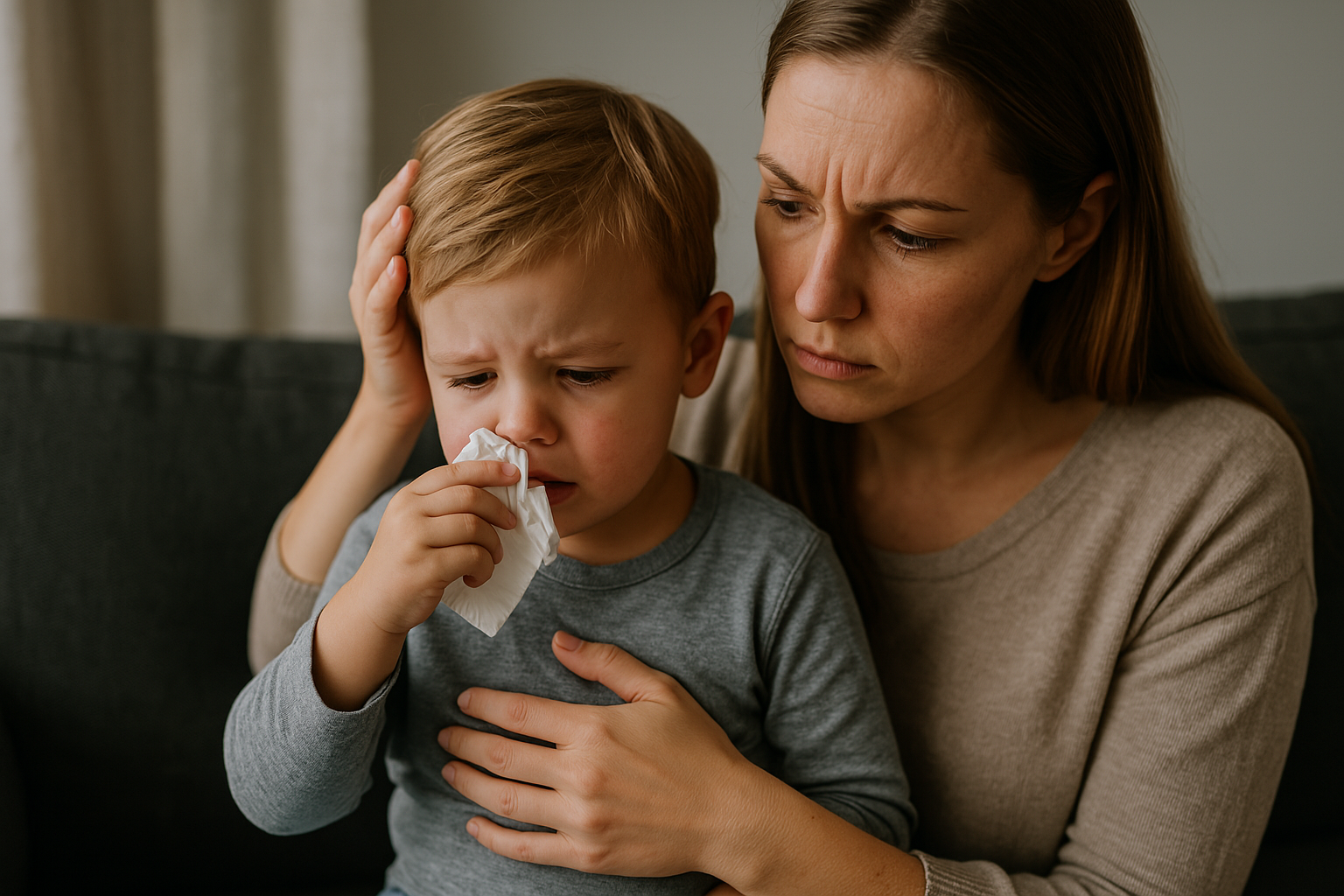Spotting Pediatric Rhinitis: A Guide to Recognizing the Symptoms
If your child always seems to have a runny nose, sneezes frequently, or rubs their eyes constantly, pediatric rhinitis might be the cause.
Rhinitis in children can be triggered by allergies or infections, and recognizing the specific signs can help bring faster relief.
🤧 Frequent Nasal Symptoms
- Runny nose (rhinorrhea): clear or slightly cloudy mucus
- Nasal congestion: stuffy feeling, often worse at night
- Sniffling or nasal voice
- Mouth breathing due to blocked nasal passages
🌼 Sneezing and Itching
Especially common in allergic rhinitis:
– Sneezing fits, often in the morning
– Itchy nose or throat
– Itchy, watery eyes
– Rubbing or “allergic salute” (rubbing nose upward)
💤 Sleep Disruption and Daytime Effects
- Difficulty falling asleep
- Snoring or restless sleep
- Daytime fatigue or irritability
- Trouble concentrating in school
🔄 Seasonal or Persistent?
- Allergic rhinitis often appears during spring/fall or in response to indoor allergens (dust mites, pet dander)
- Non-allergic rhinitis may follow viral infections (like a cold)
🚩 When to Worry
- Fever or thick yellow/green mucus may signal sinus infection
- Persistent symptoms longer than 2 weeks
- Difficulty breathing or swallowing

What Causes Pediatric Rhinitis? A Medical Look into Childhood Nasal Inflammation
Rhinitis is a condition marked by inflammation of the nasal passages, and in children, it’s often due to allergies or infections.
Understanding the cause helps guide treatment and prevents unnecessary antibiotics or worry.
🧠 What Is Pediatric Rhinitis?
Rhinitis refers to inflammation of the mucous membrane in the nose, causing:
– Nasal congestion
– Runny nose
– Sneezing
– Itching
It can be classified as:
– Allergic Rhinitis (AR) — immune response to allergens
– Non-Allergic Rhinitis (NAR) — due to irritants, temperature changes, or infection
🧬 Common Causes
Allergic Rhinitis:
- Pollen (seasonal)
- Dust mites
- Pet dander
- Mold
- Cockroach allergens
Non-Allergic Rhinitis:
- Viruses (cold, flu)
- Strong odors, smoke
- Cold air
- Hormonal changes
📊 Age and Occurrence
- Allergic rhinitis commonly begins between ages 2–6, sometimes later
- Younger children (<2) are more likely to have viral rhinitis
- Children with family history of allergies are at higher risk
⚠️ Complications
- Sinusitis from prolonged congestion
- Ear infections (otitis media with effusion)
- Asthma flare-ups in children with co-existing asthma
- Sleep disturbances and reduced school performance
🩺 Similar Conditions
| Condition | Similarities | Differences |
|---|---|---|
| Common Cold | Runny nose, sneezing | Usually includes fever, lasts <10 days |
| Sinusitis | Congestion, facial pressure | Thick discharge, longer duration |
| Adenoid hypertrophy | Nasal obstruction | Chronic mouth breathing, no sneezing |
| Foreign body in nose | One-sided discharge | Foul odor, localized irritation |

Managing Pediatric Rhinitis: Home Remedies, Prevention, and Doctor Guidance
Whether it’s seasonal sniffles or year-round sneezing, pediatric rhinitis can affect your child’s sleep, school, and comfort.
Fortunately, you can help with a mix of natural care, clean environments, and smart medical timing.
🌿 At-Home Relief Options
- Saline nasal spray or drops to flush out allergens
- Cool mist humidifier to reduce dryness and soothe airways
- Elevated head position during sleep for better breathing
- Encourage blowing nose gently instead of sniffling
- Offer warm fluids (like soup or herbal tea)
🧼 Prevention Starts at Home
- Wash bedding weekly in hot water
- Use dust-proof covers on pillows and mattresses
- Vacuum frequently with HEPA filters
- Keep pets out of the child’s bedroom
- Avoid exposure to smoke, perfume, and cleaning chemicals
🏥 When to See a Pediatrician
- Persistent symptoms beyond 2–3 weeks
- No improvement with antihistamines or home care
- Presence of ear pain, high fever, or bad breath
- Concerns about asthma or sleep disruption
💛 Final Thoughts
Nasal symptoms might seem minor, but they can weigh heavily on a child’s daily life.
With a combination of environmental control, gentle care, and medical guidance when needed, your child can breathe clearly again.
You’re not overreacting. You’re showing up—and that’s what matters most.




